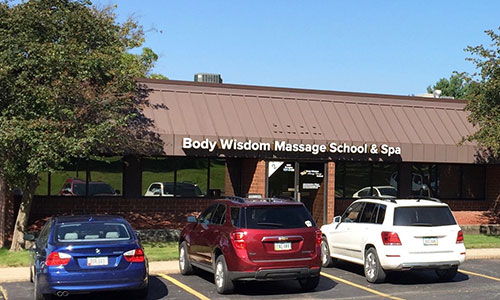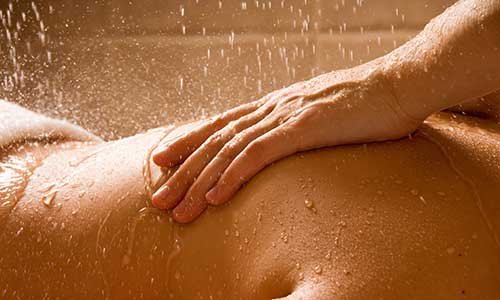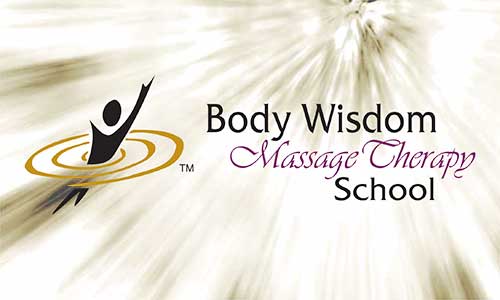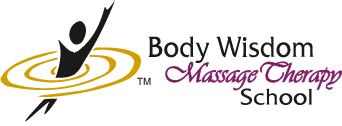Clinical Sports & Orthopedic Massage (96 hours)
Who Can Benefit from Clinical/Orthopedic and Sports Massage?
Although Clinical Sports Massage is generally associated with various kinds of sports and athletics, truly everyone can benefit from orthopedic massage. Not only those who are physically active, but also people who have desk jobs, or professions that include physical labor and especially repetitive positions and actions. This modality caters also to any type of chronic conditions or injury recovery. Furthermore orthopedic massage is ideal in working with the elderly population and anyone who’s had joint replacements, like knees or hips, etc. Even the healthy client can gain from this technique; needless to say it is a must for there is much in it for professional and top echelon amateur athletes, as well as professional dancers, those involved in fitness activities (yoga, weightlifting, cross fit and aerobics) and recreational sports (biking, skiing, backpacking, etc.).
In addition, Clinical Sports Massage or Orthopedic Massage techniques, while developed through working with athletes, can be adapted to address common conditions and complaints associated with daily living and any population.
Assessment and Treatment Protocols:
The Clinical/Orthopedic and Sports Massage treatment protocols taught in this in-depth course address the goals of optimizing capabilities for physical function and performance, and preventing and limiting injuries. Students will learn to use assessments to identify restrictions and limitations of the musculoskeletal system, evaluate and assess accident, sports or common injuries, and deliver effective bodywork protocols to address such conditions within their scope of practice*. Students will learn evaluation skills to help them determine where Clinical/Orthopedic and Sports Massage techniques can help in the rehabilitation process, and when massage therapists need to refer out to other appropriate medical health practitioners (chiropractors, osteopaths, orthopedic surgeons, physical therapists, MD’s, etc.).
*Students will be trained to understand that ONLY qualified medical personnel can legally diagnose an injury, disease or physical dysfunction.
Lower Body Coverage includes Hip and Pelvis, Knee and Thigh, Foot Ankle and Leg Injury Conditions:
Muscle Strain, Plantar Fascitis, Morton’s Neuroma, Tarsal Tunnel Syndrome, Achilles Tendonitis, Lateral and Medial Ankle Sprains, Anterior/Lateral Shin Splints, Medial Tibial Stress Syndrome, Turf Toe, Anterior Compartment Syndrome, Dorsiflexor Tenosynovitis, ACL, PCL, MCL, LCL Sprains, Meniscal Injury, Patellofemoral Pain Syndrome, Patellar Tendonitis, Chondromalacia Patella, Illiotibial Band Syndrome, Trochanteric Bursitis, Sacroilliac Joint Dysfunction, Hip Pointer, Piriformis Syndrome.
Upper Body Coverage includes Lumbar, Thoracic and Cervical Spine, Shoulder, Elbow, Forearm, Wrist and Hand Injury Conditions:
Muscle Strain, Lumbar Disk Pathology, Spondylolysis, Spondylolisthesis, Facet Joint Irritation, Thoracic Outlet Syndrome, Whiplash, Torticollis, Cervical Disk Pathology, Shoulder Separation, Rotator Cuff Tears, Shoulder Impingement Syndrome, Bicipital Tendinitis, Pectoralis Minor Syndrome, Sub-Acromial Bursitis, Glenohumeral dislocation/subluxation, Adhesive Capsulitis, Olecranon Bursitis, Lateral Humeral Epicondylitis (Tennis Elbow), Medial Humeral Epicondylitis (Golfer Elbow), Carpal Tunnel Syndrome, DeQuervain’s Tenosynovitis and more.
Prerequisites: Therapeutic Massage Level 1 & 2, Anatomy/Kinesiology or Equivalent
96 –Hour Courses
48 – Hour Courses
- Deep Tissue Massage (48 hrs)
- Myofascial Release Technique (48 hrs)
- Positional Release (48 hrs)
- Hot & Cold Stone Therapy (48 hrs)
- Acupressure (48 hrs)
- Foot Reflexology (48 hrs)
- Lymphatic Drainage Massage (48 hrs)
- Clinical Aromatherapy & Massage (48 hrs)
- Maternity & Infant Massage (48 hrs)
32 – Hour Courses
24 – Hour Courses
- Craniosacral Therapy (CST) Level 1 (24 hrs)
- Craniosacral Therapy (CST) Level 2 (24 hrs)
- Neuro-Muscular Massage (24 hrs)
- SansHands Flow™ (24 hrs)
- Bamboo Massage (24 hrs)
- Clinical Hydrotherapy (24 hrs)
- Thai on the Table (24 hrs)
- Hot Stone LomiLomi (24 hrs)
- European Spa Specialties (24 hrs)
- Thai Foot Reflexology (24 hrs)
16 – Hour Courses
- IASTM: Instrument Assisted Soft Tissue Mobilization (16 hrs)
- Fusion 16 - "Best of BWS” Collection (16 hrs)
- Rock to Relax: Pulsing (16 hrs)
- Rock to Relax: Rebalancing (16 hrs)
- Thai Herbal Spa (16 hrs)
- Premier Spa: Indonesia (16 hrs)
- Sea Shell Massage (16 hrs)
- Ayurvedic Shirodhara (16 hrs)
- Hot Stone Reflexology (16 hrs)
- Sound Infused Massage Therapies (16 hrs)
- Oncology & Critical Care Massage (16 hrs)
- Geriatric (Elderly) Massage (16 hrs)
- Hospice (Palliative Care) Massage (16 hrs)
- Reiki Intensive (16 hrs)
- Reiki Master Course (16 Hours)
8 – Hour Courses
- Your Crown & Glory - Head Massage (8 hrs)
- Dreamy Face Sequence (8 hrs)
- Crazy Good Neckwork - Version I (8 hrs each)
- Crazy Good Neckwork - Version II (8 hrs each)
- Ease the Load – Shoulder Work (8 hrs)
- Embracing Life – Arms, Wrists & Hands (8 hrs)
- Soothing Belly Work - Abdominal Sequence (8 hrs)
- I’ve Got Your Back - Special Back Techniques (8 hrs)
- Move Freely - Pelvis/Hips (8 hrs)
- Stand Your Ground - Legs/Feet (8 hrs)
- Relax - Ear & Hand Reflexology (8 hrs)
- Intuitive Hands-On Energy Work (8 hrs)
- Himalayan Salt Stone Massage (8 hrs)
- Stretching - Tai Chi - Qigong: Lower Body (8 hrs)
- Stretching - Tai Chi - Qigong: Upper Body (8 hrs)
- Cupping: Myofascial Decompression (8 hrs)
- Crystal Radiance: Massage with Gemstones (8 hrs)
- Death Doula Certification (8 hrs)
- Business Ethics, Law and Communication (6 hrs)
- Event, Promotional, and Corporate Chair Massage (8 or 12 hrs)




